Try These Stretches to Keep Your Feet, Knees, and Hips Strong and Flexible While Walking
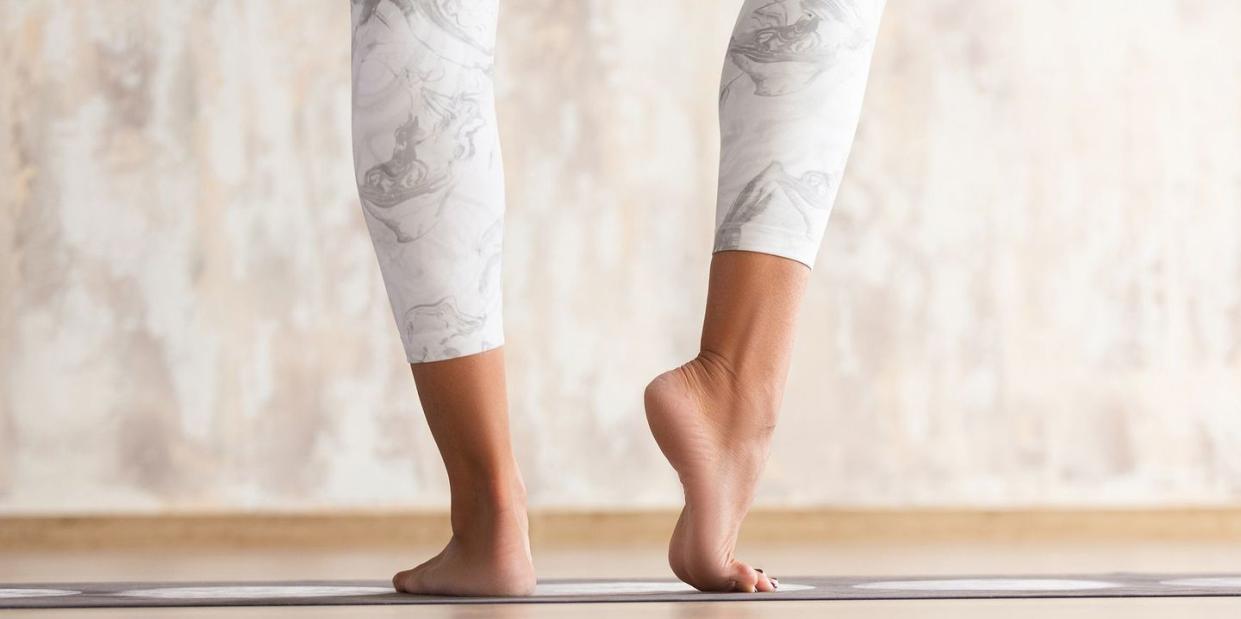
“Hearst Magazines and Verizon Media may earn commission or revenue on some items through the links below.”
There’s a reason so many people love walking—it’s a great form of exercise that you can do virtually anywhere. But some people may not feel ready to just walk out the door and clock a mile or three. That’s why Katy Bowman, a biomechanist, and Jill Miller, a fascia expert, created a whole body program, Walking Well, to help get anyone in tip top walking shape. “We designed a set of exercises to prepare your body to walk with greater ease, increase how far or long you can walk, and get you walking comfortably on a variety of terrain,” says Bowman.
Want some practice? Join the Prevention Virtual Walk on October 2, 2021! Sign up for free and do your 5K wherever you please. We look forward to walking “with” you!
Each move targets a specific body part to stretch, strengthen, and improve mobility. All these things are super important when you’re just getting active or just haven’t been moving as much. “When you’re sedentary, joints can stiffen and don’t contract and lengthen as well, so our range of motion shortens; you want to prepare your tissues for walking so you can use your body more efficiently,” Miller adds.
Here are a few key moves from their program to get you ready to walk.
Get your feet and ankles ready
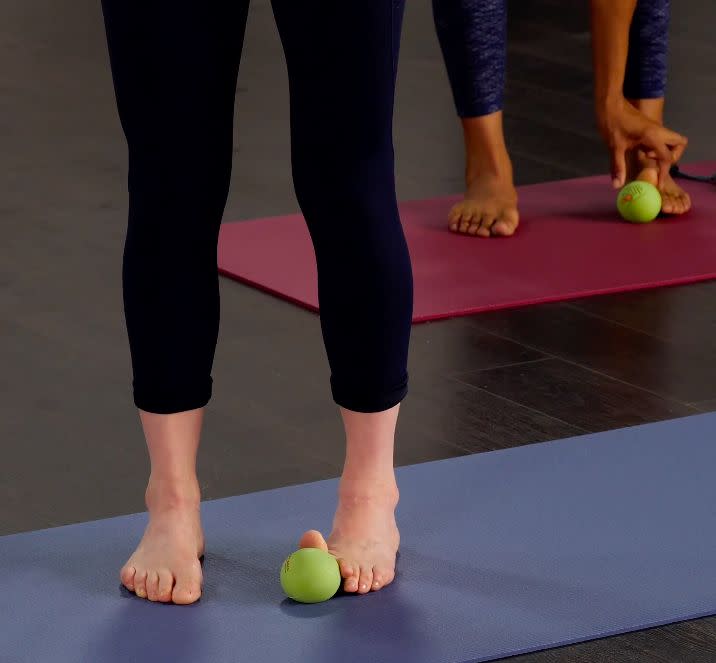
Big toe on the go
A flexible big toe is key to good walking form. “The big toe is the last thing that leaves the ground when you step forward, and there’s a reflexive action from the toe all the way up to the glute that helps propel you forward,” says Miller. “If the toe doesn’t bend well, you end up rotating your leg way out to the side and full force won’t come form your glute. That leads to that awkward, duck-like walking form.”
Rest the big toe on a soft ball like a yoga ball or tennis ball (you can also use a rolled up towel, blanket, or folded yoga mat). Make sure the ball of your foot rests on the ground.
Hold that position for 30 seconds, then try to press your toe into the ball 10 times.
Lower and lift your heel, as if you were beginning to take a step, 10 to 15 times.
Switch feet and repeat.

Calf stretch
“The mobility and strength of yourcalf muscles are what sets the stage for how other parts, like your knees and hips, can move,” says Bowman. Strong calves can lead to longer strides, better balance, and strong ankles.
With a wall or chair close by for balance, place a half foam roller (or a rolled yoga mat or towel) on the floor in front of you. Step onto the towel with a bare foot; place the ball of the foot on the top of the towel and keep your heel on the floor. This is your stretching leg.
Slowly straighten your stretching leg. Keeping your body upright, step forward with the opposite foot. The tighter your stretching leg, the harder it is to take that step.
Hold that small step for 30 to 60 seconds, then repeat on the other side.
Get your knees ready
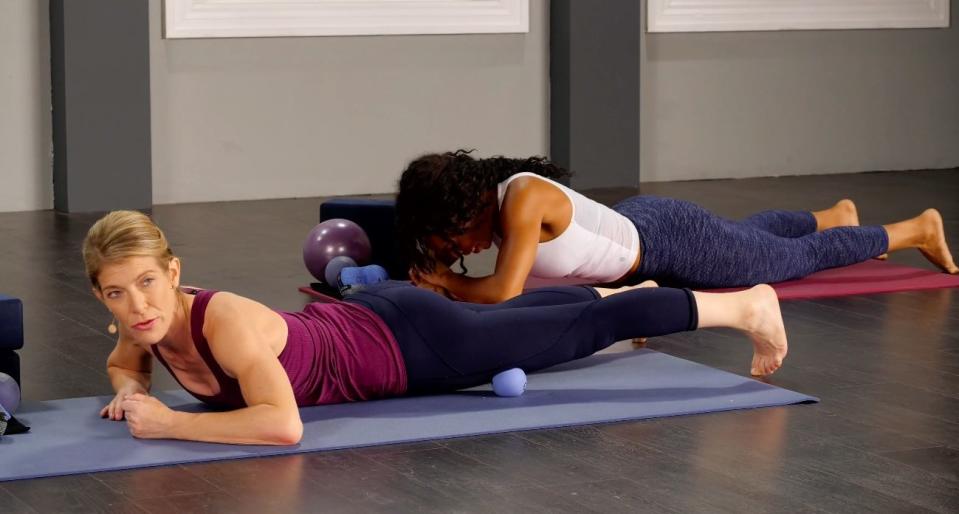
Quad quench
“Your quads play a role in both flexing your hips and extending your knees, so it’s important to make sure they have good elasticity so you can have full range of motion,” says Miller.
Lie face down on the floor. Place a soft ball like a yoga ball or tennis ball under your quad (if you have a pair, you can place one under each quad work on both at the same time). Take some deep breaths.
Start to slowly contract (stiffen) and then relax (let go) your quadriceps, allowing it to sink into the ball. Contract and relax 15 to 20 times.
Now, move your body like a snake to inch the ball from the top of your knee to the top of the thigh. If you feel a tight spot, stop and repeat the contract and relax move. Roll this way for two to five minutes.
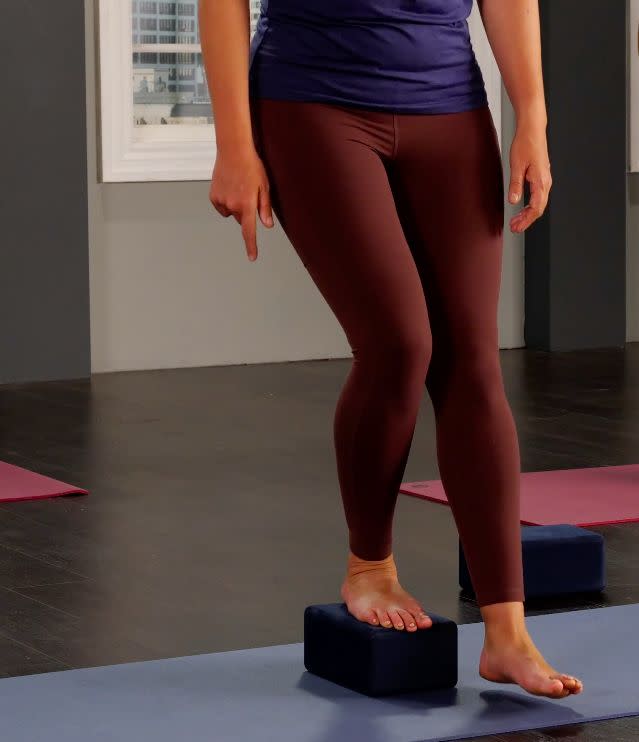
Step up and over
When you walk on mostly flat surfaces, you may feel a bit of pain when climbing stairs or walking up hills. “By practicing this move, you’ll better condition your knees and muscles that stabilize them so you can hit the hills with improved resilience,” Bowman says.
Grab something about the height of your average stair or step—a yoga block, a thick book, or a small box. Place your right foot on this “step.”
Slowly step up until you're standing all the way on your right leg with your left foot in the air. Then slowly step down in front of the block, trying to get your foot on the ground in front of the block without lifting the heel off the block. Then pull that leg up and step down on the front of the block. Keep your knee aligned with your foot as you step up and down.
Do this movement 10 to 20 times, then repeat on the other side.
Get your hips ready
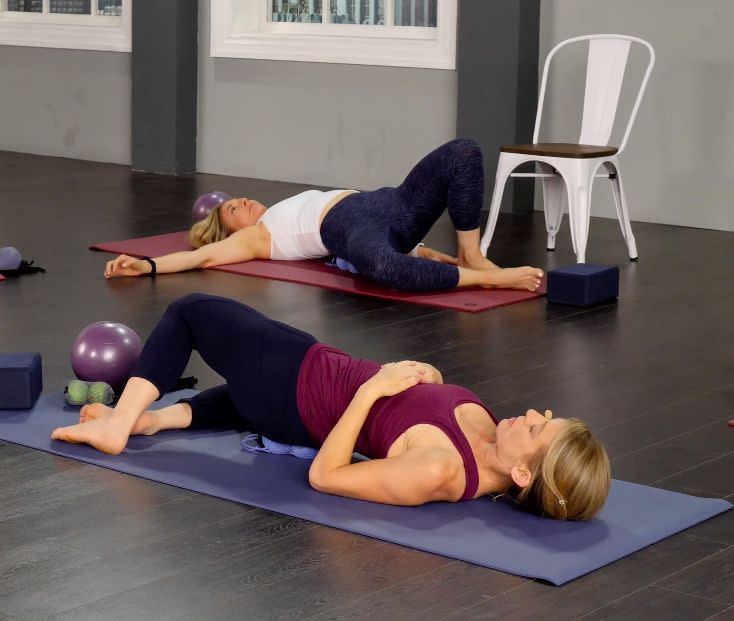
Booty reboot
Your hips help provide the force you need to move your body forward when walking. Since your glutes are connected to your hip joint, targeting them can help improve hip rotation and overall mobility.
Lie flat on your back on the ground. Place a pair of therapy, yoga, or tennis balls under the outside of your hip and lean into them.
Roll the balls from your outer hip toward your tailbone.
Do this for two to three minutes, then switch sides.
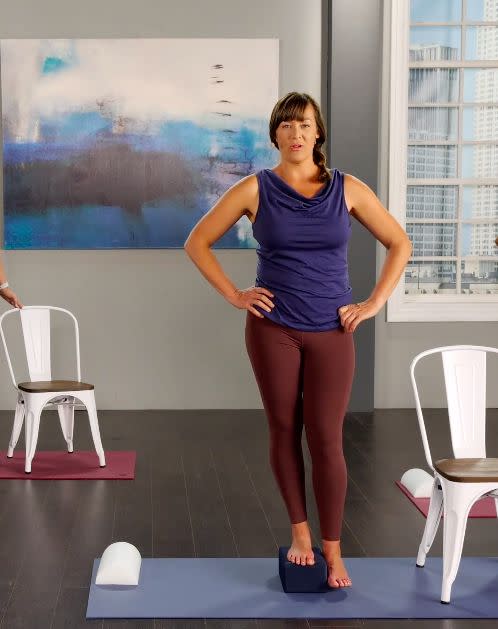
Pelvic list
Your pelvis is anchored to your vertebrae by a hip joint on each side, and this move targets both for more efficient walking.
Using a chair or wall for balance, stand up straight with your right foot a yoga block, thick book, or small box.
Keeping both legs straight (no knee bending!), lower the floating foot toward the floor; this stretches the muscles on the outside of the right hip. Then, push the right foot down into the block (which helps contract the outside of the right hip) to lift the floating foot away from the floor.
Repeat this lift and lower a few times, then repeat on the opposite side.
Get your upper body ready
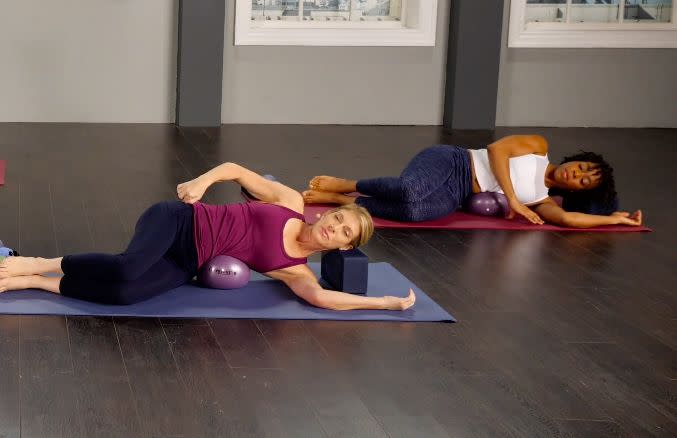
Lumbar lengthener
Keeping your lower back flexible helps you move better, says Miller.
Lie on your side. Place a small exercise ball, thick pillow, or rolled up blanket under your waist.
Breathe slowly into the ball for 10 deep breaths. Then in slow motion, begin to roll the ball a few inches forward towards your navel and a few inches backward toward your spine.
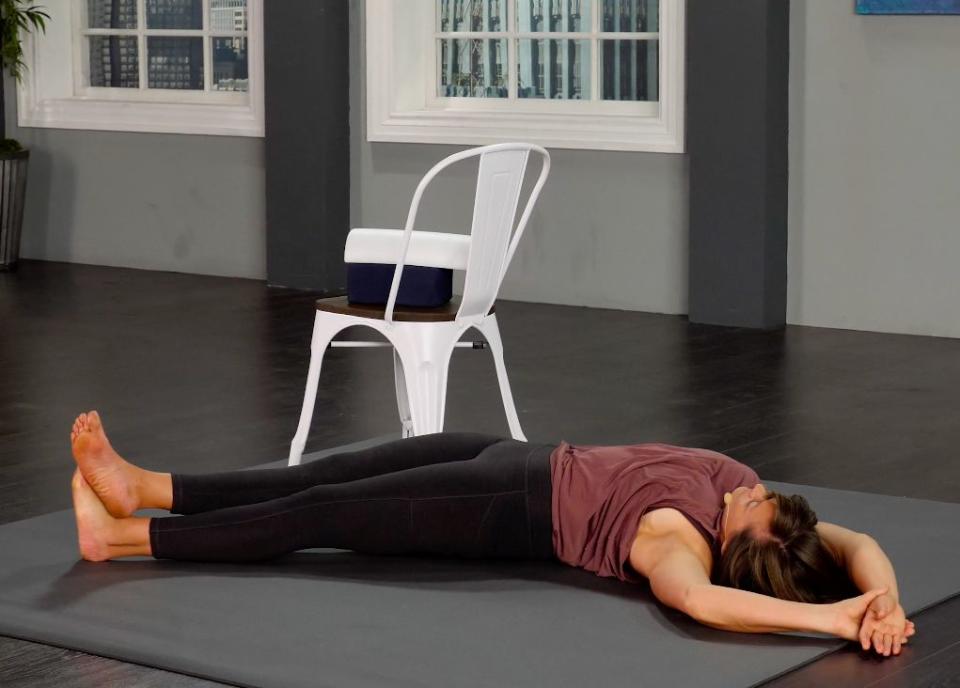
Crescent stretch
This move gives your whole back a nice big stretch.
Lie on your back. Reach your arms over your head until your hands touch the floor overhead.
Walk both your arms and feet to the same direction, creating a crescent shape with the body. Keep your pelvis and ribcage flat on the ground (no twisting) until your waist begins to stretch.
Hold for 30 to 60 seconds, then repeat on the other side.
Go here to join Prevention Premium (our best value, all-access plan), subscribe to the magazine, or get digital-only access.
You Might Also Like

